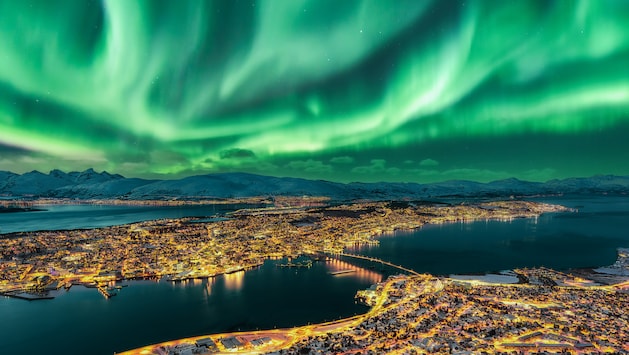The northern lights are considered one of the most beautiful natural phenomena in the world – but many people don’t know how they come about.
The breathtaking lights appear both in the northern hemisphere as “Aurora borealis” and in the southern hemisphere as “Aurora australis”. They appear primarily in the polar regions, but also on other planets and sometimes even in Germany.
Solar winds, which consist of plasma, i.e. mainly ions and electrons, are responsible for the formation of the northern lights. The sun distributes approximately one million tons of plasma per second throughout our solar system, reaching Earth after two days.
There the solar wind hits the planet’s magnetic field and compresses it a little, but is unable to reach the atmosphere.
Instead, the particles migrate along the field lines of the Earth’s magnetic field to the polar circles, since the lines there are perpendicular to the Earth’s surface. There the split atoms of the plasma manage to penetrate into the atmosphere, where they meet the oxygen and nitrogen atoms in our air.
When the atoms collide, the energy levels of the oxygen and nitrogen atoms are raised. This means that the particles have more energy than necessary. This excess energy is released in the form of light.
Depending on the strength of the solar winds, the lights appear in different shapes. According to the Vallance-Jones classification, these can be, for example, corona (ring-shaped rays), curtains, arches or ribbons.
An aurora can take on different colors, depending on the altitude at which it was formed and the affected atom that the plasma hits.
The oxygen atoms, excited at an altitude of 100 kilometers, emit green light and are best seen by the human eye.
The oxygen atoms that hit the plasma at a height of 200 kilometers emit red light. This is the case in Europe, for example, including Germany.
Nitrogen atoms, on the other hand, are very difficult to excite with plasma. The blue or violet luminous phenomena that emanate from this connection are therefore rather rare.









